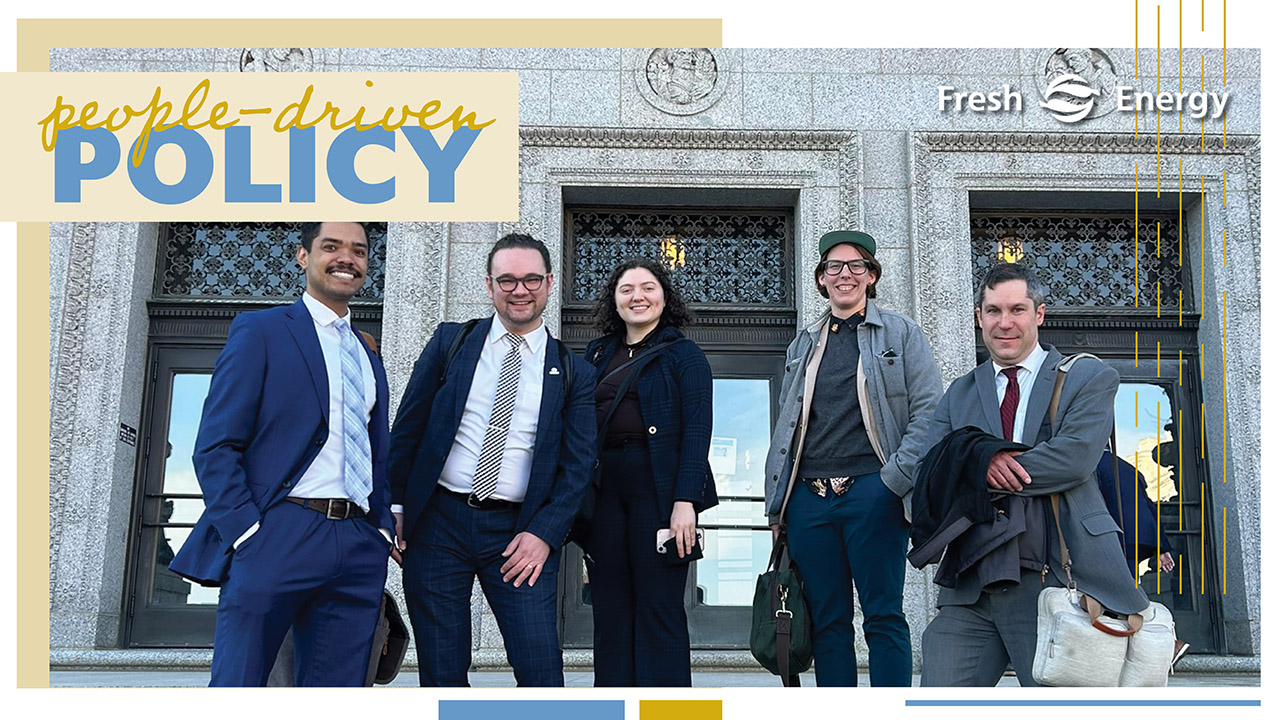
If you’re like many of us here at Fresh Energy, you’ve been hearing a lot about the Green New Deal in the news… and might have some questions, like “Can we achieve this?” and “What does this mean for Minnesota?” So, let’s take a little dive into the Green New Deal and see what it’s all about.
So, what is it exactly?
At its essence, the Green New Deal is setting the stage for a nationwide mobilization to address climate change. It acknowledges that we need bold, aggressive, immediate action to reduce emissions, and proposes social and economic policies to help facilitate a transition of this scale. In February, Representative Alexandria Ocasio-Cortez and Senator Ed Markey introduced a Green New Deal resolution calling on Congress to develop and implement a ten-year program to put the country’s might behind the climate change fight.
The resolution lays out five goals for the Green New Deal mobilization:
- Achieve net zero greenhouse gas emissions
- Create millions of family-sustaining jobs, advance economic prosperity
- Strengthen our infrastructure to address 21st-century challenges
- Secure clean air and water, resilience, healthy food, access to nature, and a sustainable environment for all Americans
- Promote justice and equity for frontline and vulnerable communities; repair and prevent systemic injustice
The resolution makes it clear that the United States needs to achieve net zero greenhouse gas emissions as soon as possible, per Intergovernmental Panel on Climate Change recommendations. Net zero means that any greenhouse gases emitted are balanced out by other greenhouse gases removed from the air by natural carbon sinks like plants and oceans or by carbon sequestration. This aggressive goal is designed to spur immediate action–which we can all agree is needed–but it does not require that this happen within 10 years. Still, if you think of how far we’ve come in the last ten years designing piecemeal policies and battling opposition, imagine how much we could accomplish collaboratively in the next ten years!
Can we achieve this?
You bet. Most studies of “deep decarbonization” demonstrate that we can reduce emissions 80%-90% with technologies we have today. It’s worth noting that the price tag for this is also fairly modest – around $1 trillion per year, or 5% of GDP – and the economic and social benefits will be enormous. We might not have all the answers yet, but we certainly have the brainpower, resources, and passion to figure them out.
As my colleague Laura said, we can’t let the unknown final steps to the finish line stop us from starting the race!
What does this mean for Minnesota?
The federal Green New Deal doesn’t have many specific policy proposals yet, but last week, Representative Frank Hornstein introduced a Minnesota Green New Deal bill at the state house. This is the result of hard work by Minnesota Can’t Wait, a group of high school students pushing for climate action, and other local advocates. The bill sets a goal for net zero greenhouse gas emissions statewide by 2030 and would establish training programs for low-carbon jobs. It would also stop the construction of any new fossil fuel infrastructure and create new emission reduction plans for many sectors of the Minnesota economy.
What’s next?
Minnesota Can’t Wait and others are continuing to gather input from the public and build public support for the Green New Deal as we approach the end of legislative session here in Minnesota. Organizations and advocates across the country, including Fresh Energy, are continuing to evaluate the federal Green New Deal resolution and to develop specific policy proposals for smart, ambitious climate action, with an eye toward 2021.
We’re following the action and will fill you in as more details emerge. Follow us on Twitter and Facebook for updates!

